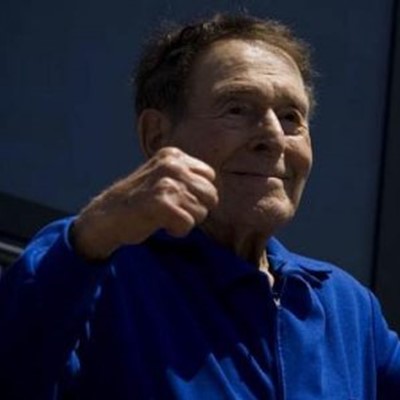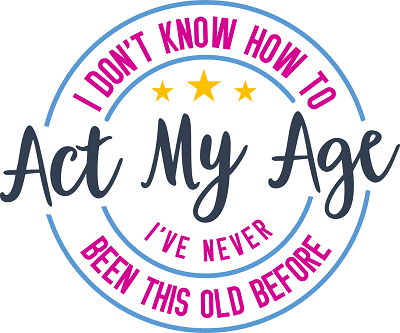 Physical Decline Resulting from Aging
Physical Decline Resulting from Aging
Getting older and eventual death is a part of life for all living organisms. Deterioration is a part of aging, which, we all have to face at some point.
Atherosclerosis and arteriosclerosis progressively decrease oxygen supply to the tissues, and in some vital organs, such as the brain, humans lose cells every single day that will never be replaced.
According to the Encyclopedia of Sports Medicine and Science, cells in other tissues of the body actually change as we age, for example, cross-linkages develop between adjacent collagen fibrils, which, decrease their elasticity and this consequently facilitates mechanical injury which results in overall progressive age related biological deterioration.
The exact mechanisms behind the aging process and its consequences on the decline humans experience is not well understood by science or the medical profession.
One hypotheses is that regular “wear and tear” actually exceeds the reparative capacity of human tissues. Some have also argued the interesting concept that the decline experienced in aging is actually an aspect of evolutionary programming to avoid the overpopulation of earth.
Our eye sight typically begins to deteriorate in our 40’s, while, hearing, for most people, begins to do so in the later 20’s.
According to experts, two of which, are Robert Kail and John Cavanaugh, who wrote a book called, “Human Development: A Life-Span View” both men and women reach their overall physical peaks in their late 20’s to early 30’s. After that, physical strength begins a gradual decline and will continue to do so throughout the rest of life.
Decline by Age
Biological and physical performance peaks are reached in young adulthood, which, covers the ages of 20 – 35.
During middle age, specifically between the ages of 35 and 45 both men’s and women’s physical activity begins to slow and body fat accumulation is typically seen.
Between the ages of 45 to 65, women reach menopause, and men typically see a decline in the output of sex hormones.
Early old age, which, encompasses the age group of 65 to 76 sees a significant decrease in physical activity.
By the age of 75 to 85, many will develop some form of physical disability. By the age of 85 and beyond many will become totally dependent.
Is it All Cut & Dry?
Don’t think for a minute that effects of aging fit a cookie cutter mold. There is a wide range of inter-individual differences in functional status at any given chronological age.
In fact, when it comes to maximum oxygen intake, flexibility, and muscle strength, a very fit 70 year old or even 75 year old can outperform a sedentary 27 or 30 year old.
This means that our physical and biological status is more determined by our lifestyle choices than chronological age.
An Example from Jack LaLanne
Jack La Lane, one of the most famous fitness gurus, died in 2011 at the age of 96, and on the day of his death he was in elite physical shape as he had been since he dedicated his life to health and fitness as a teenager.
- At the age of 43 he was able to do more than 1,000 push-ups in only 23 minutes on the “You Asked For It” television show.
- At the age of 60, LaLanne showed his physical power in San Francisco when he swam from Alcatraz Island to Fisherman’s Wharf while shackled, handcuffed and towing a boat.
- Ten years later he performed the same swim, but, this time at the age of 70 in Long Beach, California.
According to his agent, LaLanne exercised every single day, ate a healthy diet and maintained his youthful physique up until the end of his life.
“I never think of my age, never,” LaLanne said in 1990. “I could be 20 or 100. I never think about it, I’m just me.”
According to LaLanne, “the only way you can hurt the body is not to use it.” Inactivity is the killer and, remember, it’s never too late.”
Overcoming Expected Physical Decline from Aging in 4 Key Areas
Here are four key areas that decline with age and solutions that will not only slow this decline, but, will also improve your quality of life, every day performance and overall health in the younger years as well.
Muscle Loss
Lean muscle mass is our best friend when we are young, but, even more so as we age and this includes both women and men, even men who do not want to bulk like bodybuilders.
According to the American College of Sports Medicine muscular performance begins a gradual decline at about 5% every 10 years after reaching middle age and typically muscle strength peaks between the ages of 20 to 30.
Really? If Jack LaLanne was still with us, he would laugh at the above information.
Yes, it is true that muscles shrink and lose mass as we age, but, a sedentary lifestyle can accelerate this to a great extent.
The truth is that regular and ongoing strength training exercise can squash these statistics and allow us to overcome these predicted peaks by slowing age related muscle loss and building lean and mean muscle tone that will allow us to maintain a superior level of strength that will go on to serve us in everyday life for years and years to come.
Examples of strength training workouts:
- Compound exercises
- Training with free weights
- Training with weight machines
- Bodyweight workouts
Metabolism and Heart Rate
Resting metabolism, which, is the body’s ability to burn fat and calories while at rest typically peaks in early adulthood for both men and women.
By the time we reach our 60’s resting metabolism typically decreases by 10% and then continues to drop due to increases in body fat and loss of age related muscle mass.
The maximal heart rate also decreases as we age because of a lower level of response to the hormone catecholamine that is released into the bloodstream during periods of stress.
Once again, both of these issues are not givens in any shape or form. Regular endurance and cardio training can improve and significantly boost resting metabolism and keep the heart in great shape no matter what age you are.
Boosting resting metabolism also allows for healthy weight management that facilitates regular burning of body fat, which, comes with increased health values for longevity and disease prevention.
Regular endurance exercise prevents age related increases in body fat because lean muscle mass burns more fat while the body is at rest. Cardio workouts additionally help maintain the body’s response time and its ability to deliver and use oxygen effectively.
Examples of cardio, aerobic and endurance workouts:
- Biking
- Running
- Walking
- Rowing
- Aerobics workouts
- Steppers and step aerobics
- Sports
- Swimming
- Boxing
- Kickboxing
- And many more
Anaerobic Training
Anaerobic exercise is a much more intense form of cardio training where one literally works out in a state “without oxygen” and is known to boost resting metabolism for 12 plus hours after a workout and can facilitate the ultimate physical fitness at any age.
Exercises include:
- HIIT
- Tabata
- Kettlebell Training
Flexibility
Another area of decline as a result of aging is flexibility. This is of great concern because it can cause many problems for us in our older years by inhibiting range of motion as the joints become more restricted and flexibility decreases due to changes in tendons and ligaments.
According to the Encyclopedia of Sports Medicine and Science, humans will lose about 3 to 4 inches of flexibility in the hips, lower back and hamstrings as they age. This is measured by a test known as the “sit and reach.”
Collagen is made of fibrils that begin to develop cross-linkages as we age, which, contribute to a reduced elasticity of ligaments, tendons and joint capsules.
Regular and ongoing flexibility training can greatly hinder this consequences of aging and ensure improved and peak range of motion and therefore increased performance in everyday life, in sports, at work and in our senior years where it really matters the most.
Flexibility is facilitated mainly through stretching exercises. This can include stretching pre-strength training and/or pre-cardio workouts or it can be done on its own throughout the day.
Even the simple exercise of moving the major joints of the body, such as, the hips through their entire range of motion each day can greatly improve age-related flexibility loss.
Examples of flexibility exercises
- Torso stretch
- Torso switch
- Seated march
- Quadriceps stretch
- Hamstring stretch
- Calf Stretch
- And others
Stretching for Body Builders
Many times bodybuilders neglect to perform stretching exercises because they feel that it hinders muscle growth, but, that is actually a myth.
Stretching plays a significant role in muscle growth. This happens because of the fact that each muscle in the body is enclosed in connective tissue known as fascia that works to keep the muscles in their rightful place.
While bulk is built, and muscles grow nothing happens to the fascia, so the muscles grow only to where they become compressed along the fascia. They are therefore limited by the expansion of the fascia, which, without stretching is very slow.
Also, there is a great probability that the phenomenon known as muscle memory is actually the expansion rate of the fascia. This is illustrated by the fact that newbie lifters gain bulk fast because their fascia is not ‘filled’, while, experienced lifters who take a break for a while and then begin lifting again gain muscle fast because their fascia has been previously stretched to a great extent, which, allows their muscles to grow freely.
While this hypothesis has not been proven, and may not ever be, there is a great chance that it is fascia that is a part of the phenomena known as “muscle memory.”
Bone Loss
According to the Centers for Disease Control and Prevention, bones grow until the age of 30 to 35 years old. In women skeletal bone mass growth is complete by the age of 20, but, acquiring high bone mass in young adulthood can enable its sustainment until much later in life.
Adequate amounts of calcium and regular physical activity is key, and, especially for women where bone loss can cause osteoporosis later in life.
Bottom Line
Want to stall the effects of aging?
You definitely can. The bottom line is movement and lots of it.
The majority of changes in the human musculoskeletal system that result from aging can be attributed more to a sedentary lifestyle than any biological process within the body.
More than 90% of Americans lead a sedentary lifestyle with those age 50 or older being the largest group of that number who do not get regular exercise – what a sad state of affairs.
Remember, lifestyle choices made today, will affect the future of tomorrow.
Regular exercise that addresses muscle strength, endurance, and flexibility is the key to not becoming a victim of consequences of the aging process that inevitably affects all of our lives.


